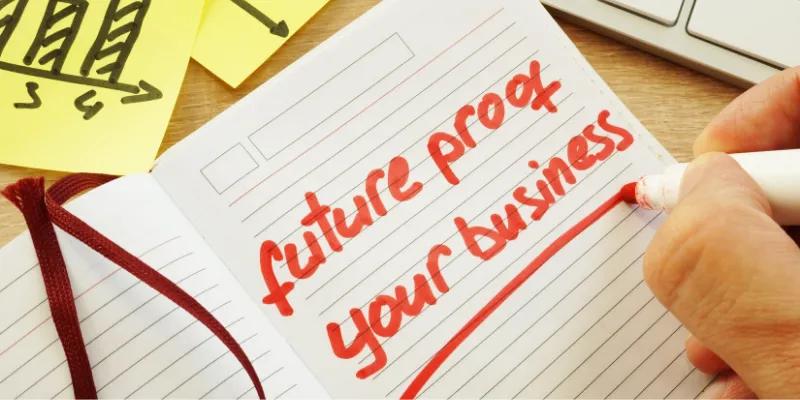How SMBs can use lockdown time to be future-ready
Given the fact that many SMBs are not equipped to operate business digitally, this is the ideal time to invest in building an online presence.
With a national lockdown in effect, the SMB sector, along with many other industries has been forced to pause operations till the country flattens the COVID-19 curve. However, every cloud has a silver lining. While India Inc. and the government have teamed up to return the nation to a state of normalcy, SMBs can adopt a more entrepreneurial spirit and use this downtime to equip themselves to be future-ready.

In 2019, it was reported that 70 percent of Indian SMBs are still offline. Given the fact that many SMBs are not equipped with the knowledge to build their brand and operate business digitally – this is the ideal time to invest in building an online presence.
There are many platforms, tools and techniques that help businesses create a digital persona, even without a specialised IT team or skills. Some of the aspects that SMBs can focus on during lockdown are elaborated below.
Build an online store
As customers migrate online, digital transformation has become the need of the hour. SMBs can use this time to conduct a brand and competition audit to find out their distinctive edge, create the right brand personality with visual elements and brand tones.
There are many platforms and payment solution provider companies that help develop websites with zero coding and set up fee charges, and are loaded with features like easy-to-use templates, uploads of product/service catalogues, numerous personalisation options - making digital presence creation a hassle-free experience, with an in-built payment gateway.
For merchants to enhance their online presence, they can use myriad applications like cloud collaboration tools, product and UX design, virtual engagement platforms, etc.
Learn intricacies of digital payment infrastructure
The World Health Organisation (WHO) has advocated the use of digital transactions wherever possible to avoid the spread of COVID 19, as the virus can be transmitted through currency notes and coins.
A digital payment infrastructure is not only more cost-effective, safe, and secure, but has multiple functionalities which help businesses collect payments, offer customers a range of convenient payment options, and automate the collection and management of recurring payments.
Digital payment gateways can be set up on website, web pages or mobile apps, according to the merchant’s needs. They provide customers a range of payment options – both offline through QR codes, as well as online.
For instance, merchants can collect payments through payment links sent via SMS, Facebook, blogs, WhatsApp, emails and excel, and the customers get almost 100+ payment options with a smooth checkout experience.
Payment Solution providers also help build operational efficiency as merchants can learn how to make customised invoice templates with detailed breakdown of expenses, tax and discount, shipping charges, and much more.
Drive business growth with data analytics
Data is the new currency that everyone is banking on – from an aspiring entrepreneur with a newly-funded startup to a well-established business. SMBs can utilise this time to set up a powerful online business dashboard, so that they can view all transactions in a systematic form. With different types of filters, one can glean insights on how much revenue is being credited and debited, reconcile payments, and send payment links to customers.
Through dedicated reports on sales and refunds, merchants can understand conversion rates and experiment with funnels to pivot success rates on different parameters such as Issuer, PG, Card type and many others.
Learn how to improve cash-flow and re-invest
A positive cash-flow is necessary to re-invest in business, increase liquidity and reduce debt burdens. There are several payment gateways that enable a merchant to receive money in the bank account on the same day of the sales. Additionally, with government stipulated technologies like e-NACH, merchants can set up subscription plans and access recurring payments without a hitch.
There are several ways that SMBs can learn how business cash flow can be improved – collecting unpaid invoices, cutting down on unnecessary costs, taking inventory and selling off unwanted stock, choosing a steady and sustainable growth plan and creating a blueprint to make wise investments.
Once the lockdown ends, these measures can be implemented as merchants shift gears to recover businesses.
Speed up with technological innovations
Technology is driving disruption at a breakneck speed and for a business owner, it is imperative to gain a thorough understanding of the landscape and realise what can be implemented. For instance, many enterprises have successfully introduced chatbots to address human queries and troubleshoot without any requirement of manual assistance.
By leveraging chatbots on website and mobile applications, SMBs can enable prompt customer support and assist a customer’s digital journey at every step. There are also many useful technologies that SMBs can learn to upskill and take their business to a new direction – by using cloud-based collaboration and project management tools, building a safe and secure mobile ecosystem with automated vulnerability assessment, for instance.
Edited by Javed Gaihlot
(Disclaimer: The views and opinions expressed in this article are those of the author and do not necessarily reflect the views of YourStory.)








